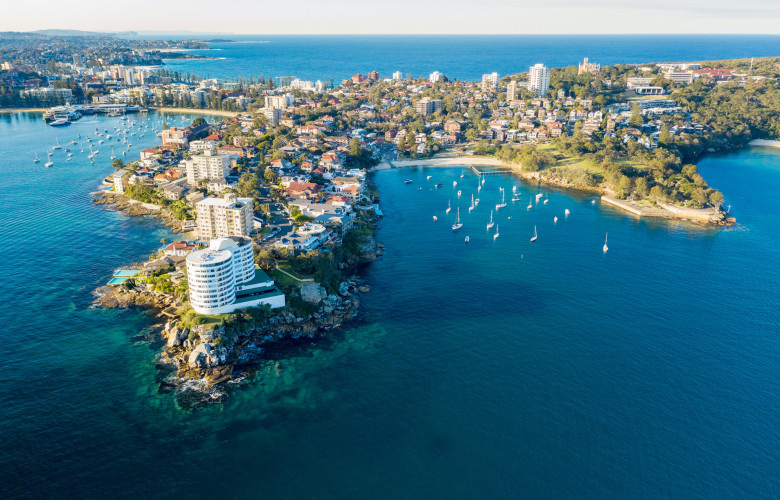John McGrath – End-of-Year Wrap: Significant shifts in 2024
Contact
John McGrath – End-of-Year Wrap: Significant shifts in 2024
At the start of 2024, price growth nationwide strengthened across the lower price brackets as people made compromises says John McGrath, Chief Executive Officer of McGrath Estate Agents.
As another year comes to a close, a lot of people are on edge about interest rates. There is some real pain out there in the lower to middle market.
At the start of 2024, price growth nationwide strengthened across the lower price brackets as people made compromises. Buyers widened their search zones to more affordable suburbs and some bought apartments instead of houses due to limited bank finance.
We continued to see an exodus from major cities to regional areas, particularly among young millennial families and an increasing number of retirees.
During Spring, we saw an uptick in homes being listed for sale that had only been purchased within the past three years. This indicated cost of living pressures had become too much for some owners, and this is one reason why market conditions n at a slower pace.
We’ve seen negative annual price growth in Melbourne, Canberra and Hobart. Sydney began to turn in October, with minor falls in the median home value over the past two consecutive months.
I think once interest rates start coming back down, we’ll see a different feeling in the market.
Meantime, there are a lot of new lifestyle trends at play.
As discussed in the McGrath Report 2025, the property market is in a new era. Homes are not just homes anymore. Many of them are also workplaces, which has shifted design trends away from open plan to more separation of rooms for working, connection, relaxation and personal space.
Affordability has inspired many families to give multigenerational living a go. This might take the form of a house divided into separate wings or granny flats being built in backyards.
Granny flats are multipurpose additions these days. They can provide separate accommodation for parents, or be rented out for income, or they can be used as home offices or teen retreats.
Actually, the term ‘teen retreats’ is becoming redundant. It’s more like ‘young adult retreats’ these days, as so many young people are staying in the family home well into their 20s to save money.
Australians are resilient and creative in finding new ways to get into housing. Staying at home longer, especially when rents have risen a lot, is sensible and allows young people to save deposits faster.
Some young people are buying an investment property ahead of a first home. They have the same aspiration as their parents to build wealth through property, but they’re doing it a different way.
The typical first home buyer is in their 30s these days, and most of them are getting help from the Bank of Mum and Dad. This is why first home buying has counterintuitively risen amid higher rates.
The Bank of Mum and Dad is part of a massive intergenerational wealth transfer that’s beginning to unfold. There are so many people in their 60s and 70s now, and that’s a time of life when people want to change their living arrangements.
They’re selling family homes to downsize, do a seachange or treechange, help their kids buy, and maybe purchase a new investment property with spare cash.
A lot of baby boomer money is going from Sydney and Melbourne up to Queensland. This partly explains the surge in home values in Brisbane and Queensland’s regional areas this year.
In fact, I’m surprised the Queensland market hasn't gone harder because it's still quite affordable.
And the Olympics is coming in less than a decade, so there will be a lot of new infrastructure like we saw in Sydney for the 2000 Games and that will create jobs, improve liveability and benefit everyone.
The other big thing happening in property is the Federal Government’s push to boost supply through the National Housing Accord. Finally, something is being done about chronic issues like delayed approvals for new developments and not building enough social housing to meet demand.
The goal is to build 1.2 million homes over five years. Whether this goal can be achieved is debatable, but what’s more important is finally seeing some action on the supply side of the market.
Previous government help has focused on the demand side – giving first home buyers grants, stamp duty concessions and so forth. This expands buyers’ budgets, which can push up prices.
More supply will provide more choice for buyers, and the government is hoping it will slow down price growth to a point where wages growth can catch up a bit, thereby improving affordability.
Demand-side incentives will continue though, with the Help to Buy shared equity scheme approved by Parliament late last month and expected to commence next year.
Help to Buy will allow 10,000 eligible purchasers per year to buy with a 2% deposit without being charged Lenders Mortgage Insurance. The government will co-own the homes, taking up to a 40% stake in new homes or 30% in existing homes.
This is my final column for the year. I’ll be back in mid-January with some market predictions for the new year. I wish you all the best for Christmas and a happy and safe holiday season ahead.
By John McGrath, Chief Executive Officer of McGrath Estate Agents.
Related readings
John McGrath – Weakness in Melbourne provides rare opportunity
John McGrath – Sydney market resilient amid higher rates
John McGrath – Baby Boomers Making Their Move
John McGrath – McGrath Report: Housing redefined: Family ties and growing pains
John McGrath – Allure of the Coastal Azure





